

A lot of work goes into the design of the products we use every day. From simple logos that speak for our brands to complex architectural designs and software applications, the design process is intricate. It aims to solve problems, create products that customers will love, and get to market faster than the competition.
Whether you manage a design team, work as a designer, or are part of a team of designers, improving your creation process is key. A well-developed design process helps boost collaboration and reduce workload and resource issues.
But figuring out how to establish or improve a design thinking process can be tricky. First off, the concept may seem vague or complex. Perhaps you’ve never seen a real-life example showing how it’s done.
Whatever the hang-up, this guide will walk you through improving your design process. We’ll start by clarifying what the process is and then share detailed examples.
Next, you’ll find a breakdown of the design process steps so you can build one that works best for your company. 🙌
What Is the Design Process?
The design process is a creative method that takes complex problems or ideas and breaks them down into manageable steps by working backward from a desired outcome. This is different from problem-solving approaches where you consider a problem and create a solution. 💪
Instead, the design thinking process encourages creativity and innovation. It’s well-suited for projects and problems that don’t have a single proven solution. It isn’t a linear process. Instead, it’s an iterative approach designed to allow you to move forward and backward between steps as needed.
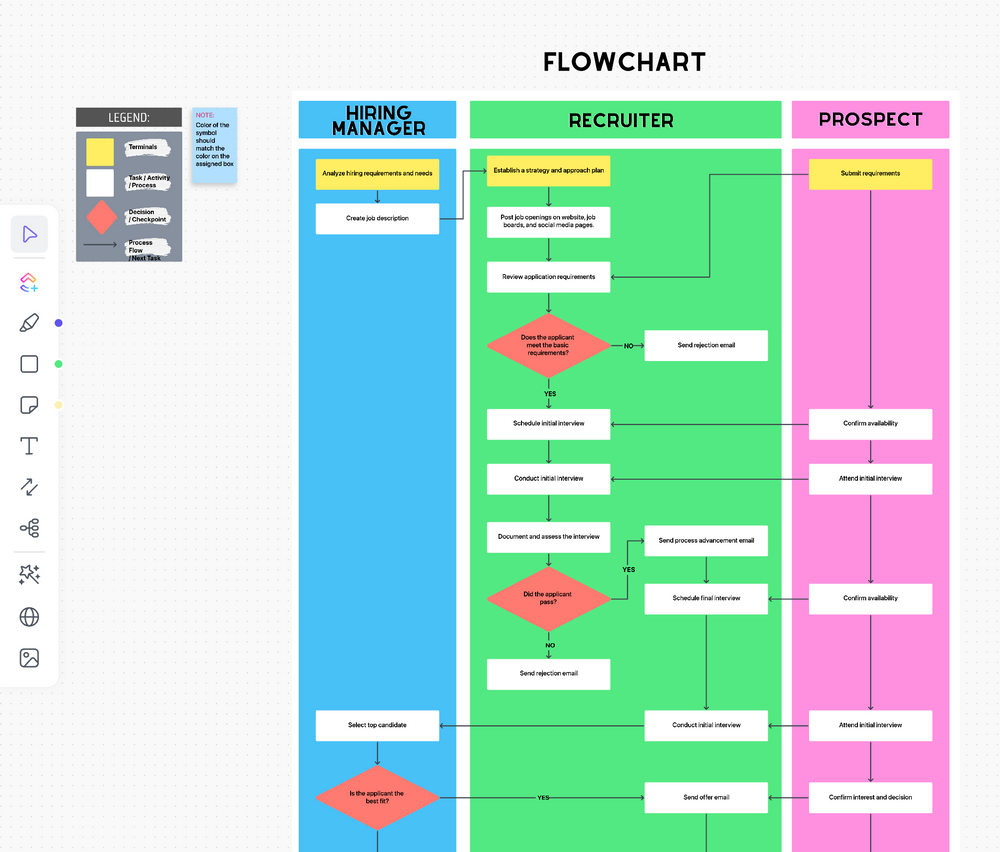
There’s also not a specific set of steps that works for every industry or every situation. The process is customizable to give your team better control over the creative process and empower you to find the best solutions possible.
While the design thinking process is common in health care and manufacturing, it’s useful in a huge range of sectors, from startups to multinational companies. Businesses use it to understand user needs to launch new products and improve existing products.
What is the End Goal of Design Thinking?
Design Thinking revolves around the principle of finding user-centric solutions that are not only effective but also innovative. At its core, the end goal of design thinking revolves around three pillars: desirability, feasibility, and viability.
Desirability
Desirability is all about ensuring that the solution or product created truly meets the needs and wants of the user. The initial stages of design thinking – empathizing and defining – delve deep into understanding the user and their problem. It is through this user-centric lens that a truly desirable solution can be identified. This ensures that the final product or solution is something that users not only need, but also want.
Feasibility
Feasibility speaks to whether the solution can be realistically implemented given the current technology, resources, and capabilities. In the ideation phase, numerous potential solutions are generated, but they need to be technically and practically possible to bring to fruition. The prototype stage often helps in assessing the feasibility of these ideas, culminating in a solution that is realistic and doable.
Viability
Lastly, viability is about ensuring the solution is sustainable from a business perspective. The final solution should lead to growth, competitiveness and impact the bottom line positively. This includes considerations of cost, business strategies, market competition, and potential return on investment. The testing phase of design thinking often unveils the potential success of the solution in the market, contributing to its viability.
Five Stages of Design Thinking
Design thinking provides a holistic view of the design process. Within this broader framework, this process is often broken down into five key stages:
Stage 1: Empathize
Empathy is at the heart of the design process. As the starting point, the empathize stage involves immersing yourself in your user’s experiences and their world. Methods like interviews, customer surveys, or even ethnographic studies might be used to gather information to start understanding the user needs, pain points, desires, and behavioral patterns.
Stage 2: Define
Once you’ve gathered insight from empathizing with the users, the next step in the design thinking process is to define the problem. This is when you lay out and articulate the user’s needs and issues clearly and compellingly. It’s in this stage that the problem statement that needs to be solved is often synthesized.
Stage 3: Ideate
The ideation stage is when you brainstorm potential solutions to the defined problem. The goal here is to generate as many ideas as possible — it’s a quantity over quality situation. Using methods such as mind-mapping, sketching, or even role-playing can help encourage divergent thinking and generate innovative concepts.
Stage 4: Prototype
At this stage, you start bringing ideas to life. A prototype is a scaled-down version of the product or solution that incorporates the ideas generated in the previous stage. This could range from a rough sketch or a three-dimensional model to a more sophisticated digital version. The purpose of a prototype is to visualize an idea so that it can be tested and improved upon.
Stage 5: Test
Testing is the final stage of the design thinking process. In this stage, the prototypes are presented to the actual users for feedback. Observing how users interact with the prototypes, listening to their feedback and learning from their experiences allows for further refinement of the design. This stage may lead to further iterations, and revisions, even leading back to previous stages.
Remember that the design thinking process is not always linear. Depending on the feedback, you might find yourself going back to previous stages. For example, user feedback might give new insights that call for new rounds of ideation, or the testing phase might uncover new issues that require a fresh empathize phase. It’s a dynamic process that’s centered on continuous learning and improving.
Helpful Design Thinking Examples to Improve Your Workflows
For many design teams, common concerns include workload and resource issues, collaboration challenges, and bad processes. Adding a tailored design thinking process to your workflows can address these issues.
What that process looks like will be different for every company. In some cases, the planning stage of the process will take the most work. In others, mock-up or measuring will be where you focus most of your efforts. 👀
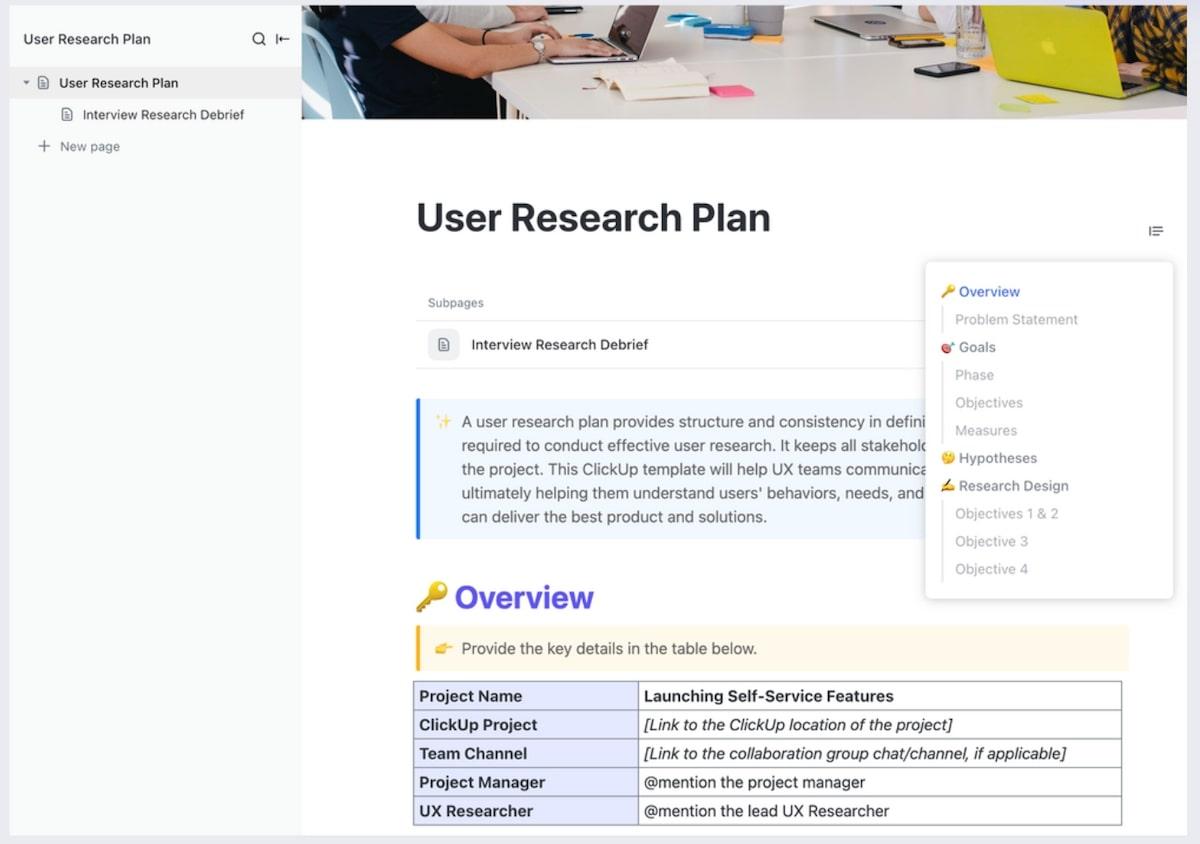
For example, a UX design process will work backward from the user experience. It’ll aim to address where users encounter problems with your products and what you can do to make them better.
That means you’ll spend most of your time gathering insights—like doing user research to understand personas—and planning your potential solutions.
In contrast, an architecture firm will spend more time in the ideation and building stages of the design thinking process. They’ll focus less on what users need and more on aesthetics, cutting-edge design, and meeting building code requirements.
Want a more in-depth look at the design thinking process in action? Read on for two examples where we break down how the design thinking process works for different businesses.
Design thinking in banking: Capital One case study
When you think of design, you probably don’t think of banking. But in recent years, banks have spent millions of dollars and allocated hundreds of hours to design better consumer experiences and products.
One example is Capital One. They surprised the market in 2014 when they bought the web design firm Adaptive Path and mobile development company Monsoon. The goal behind the acquisitions was to create a better user experience through an improved banking app. 💰
Their design thinking approach involved gathering user insights and assessing the existing state of the app. What they found was that users wanted more functionality, improved connections, and simpler access to services.
In particular, young consumers wanted more from the bank in terms of consumer-friendliness and not having to visit brick-and-mortar locations.
With a deep design team in place, Capital One started generating innovative ideas and rolling them out to market. This included a chatbot that offered friendly assistance by using emojis.
Plus, they opened several cafes in major cities like San Francisco to build rapport with consumers.
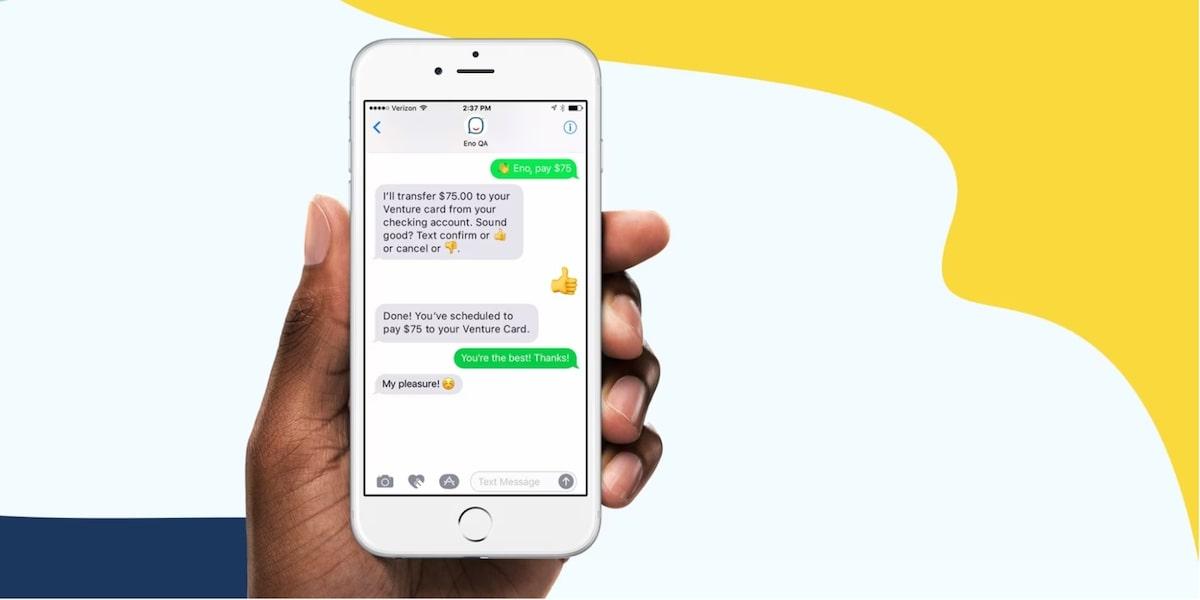
Another user-centric solution was GPS-enabled transaction history, which allowed users to better see where and how they spend their money when budgeting.
Their iterative process wasn’t limited to actual consumer products. They also invested heavily in design by building an Innovation Center and strengthening their internal team of developers and designers through their Capital One Lab.
When they want to gather information on products users want or test new products, they send that information to the design lab. There, the team shares storyboards and infographics with real customers to generate feedback and improve the ideas or offerings.
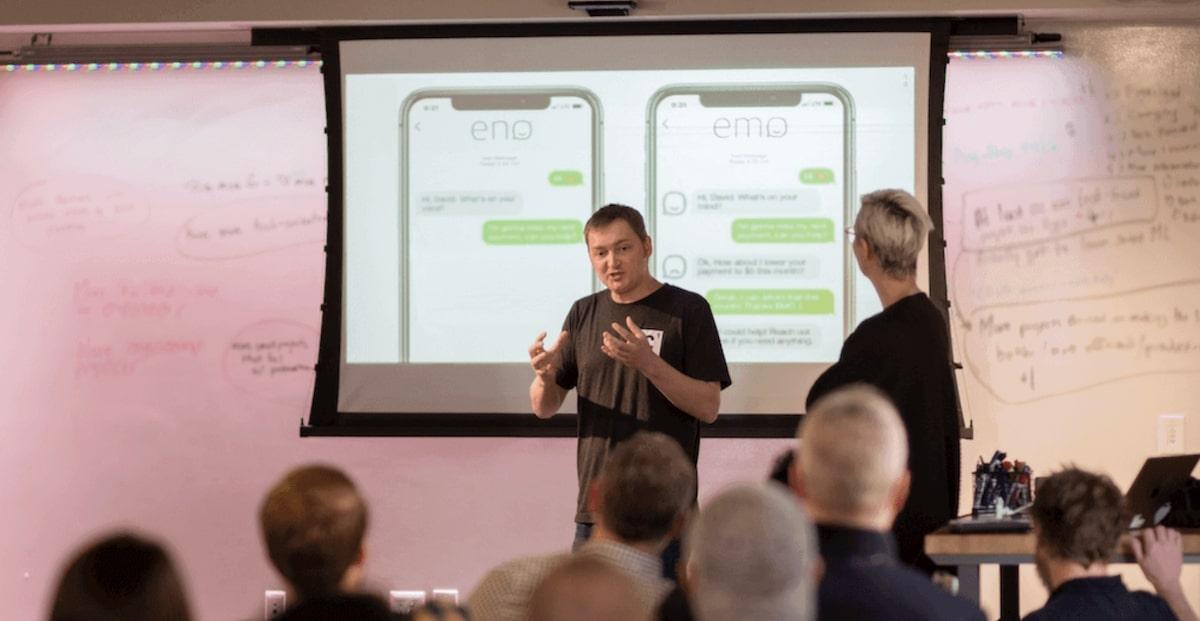
One of the biggest problems for banks was acquiring new customers. The process often was off-putting to potential customers and involved a lot of work to sign up. Most traditional banking outreach involved sending envelopes with dozens of pages of information that had to be filled out by hand and mailed back.
Capital One used design thinking to streamline this process and make it more user-friendly. They did that by getting feedback from consumers and then setting up a SaaS solution called OneView.
It helped them manage their content and create a digital packet that lets users join online, without the hassles of the old onboarding method.
Design thinking in meal delivery: Uber Eats case study
When it comes to food delivery apps, the design thinking process isn’t just about the app. As Uber Eats demonstrates, design thinking applies to all aspects of the business.
That means thinking about making a user-friendly application, providing products users want, and building a brand relationship that makes the customer feel appreciated and understood.
Operating in thousands of cities across the globe means the company has to pay close attention to its different target markets. What customers in Bangkok want is different from what New Yorkers are looking for.
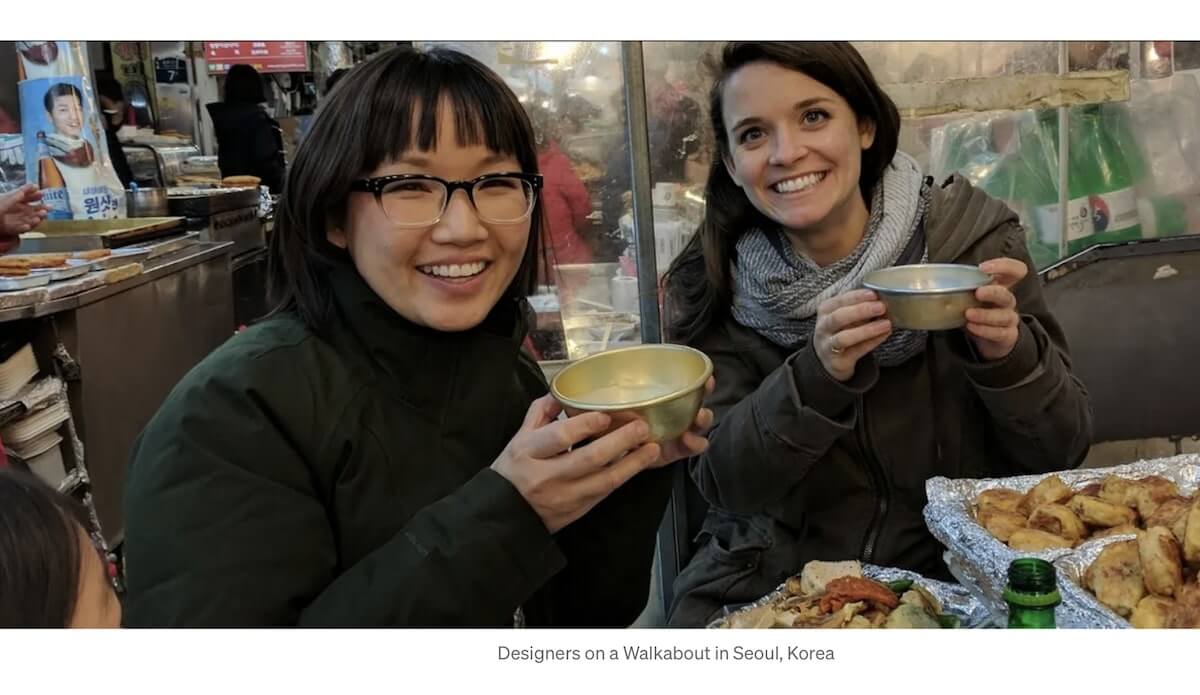
They didn’t want to just reach out to customers from behind their computers to see what they wanted. Instead, the team designed The Walkabout Program where employees immerse themselves in these cities.
That way, they get on-the-ground insights from real locals and community members. They also get to experience the place for themselves and watch how people use their designs in the real world.
Under the program, designers visit a new city each quarter. They take a look at logistics like transportation and infrastructure. They meet with delivery partners, customers, and restaurant employees to understand each aspect of their offerings and how they fit into the local space.
Uber Eats also gathers insights from consumers and delivery agents via fireside chats where users are encouraged to visit the offices and share their experiences.
Order shadowing lets designers follow drivers, visit restaurants, and watch customers place orders.
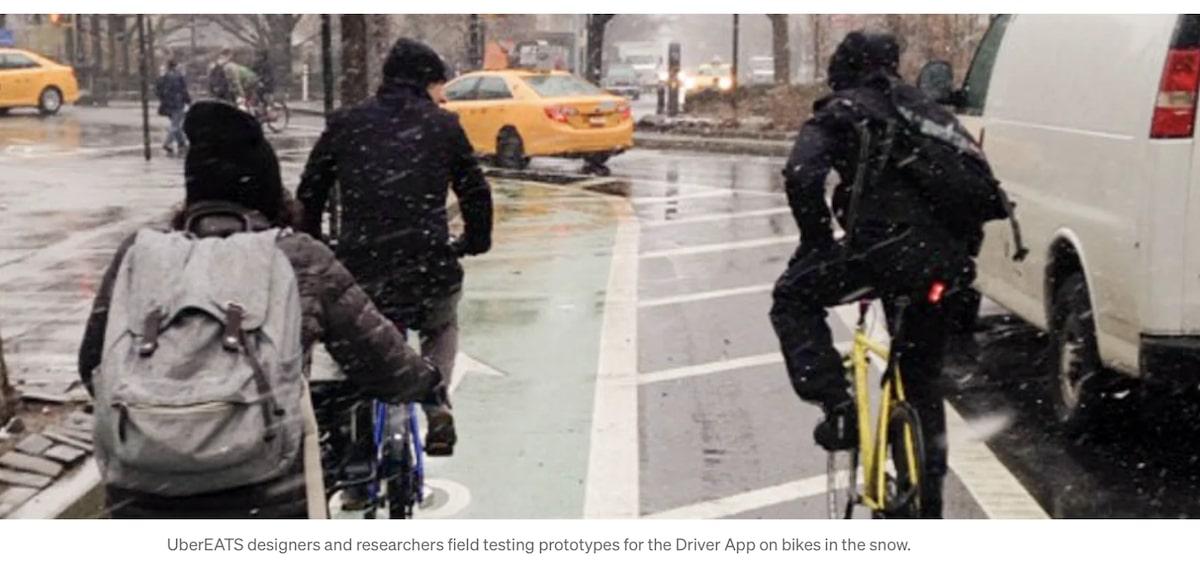
With all of these valuable insights, the company focuses on iterating quickly. They ideate and start testing prototypes and mockups in restaurants, customers’ homes, and delivery vehicles. They run A/B tests on all app design features and run operations experiments to test features before they launch.
Regular innovation meetups, workshops, and conferences are scheduled to keep the spirit of design thinking alive.
These are worked into every aspect of the business from the design team to operations and management to generate and work off user-testing data and fresh ideas.
How to Implement a Design Thinking Process
With those examples in mind, it’s time to think about how the design thinking process fits into your design teams’ workflows. Keep in mind, that the design thinking process is a series of customizable steps. It’s also nonlinear so you can move between stages as needed.
Depending on your industry and company needs, you may want to add in extra steps or skip a few. Perhaps part of the design team doesn’t need to be involved early on but will play a key role in later steps of the design process. Maybe you need more stages for user research, building, or testing.
Whatever your business needs, be sure to build your design process to fit that mold for all complex projects. In general, here are the most common design process steps. Use them as a launch point to craft your procedure to meet team goals.
Plan
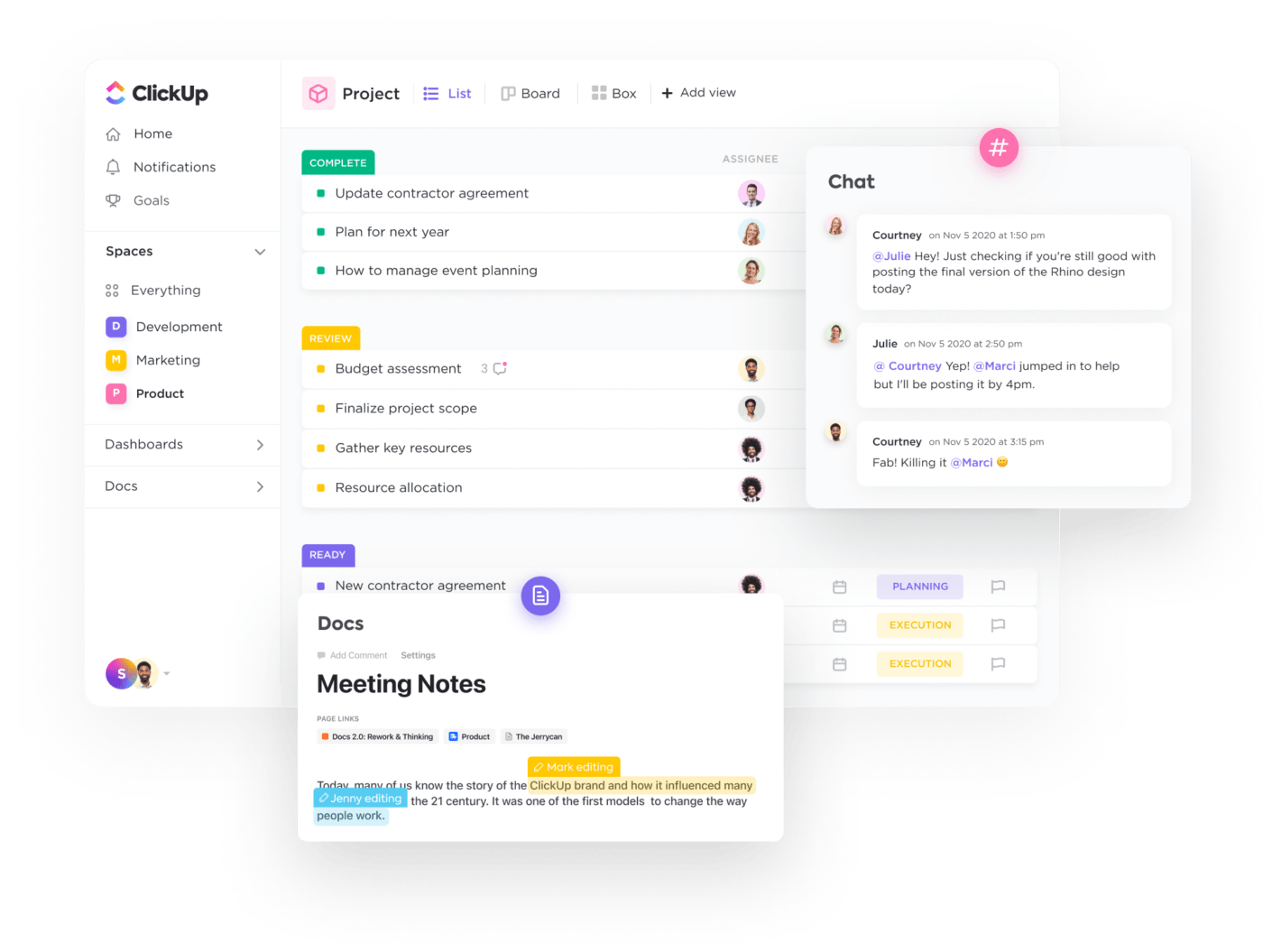
Before you even think about creating possible solutions for your design project, you need to identify the problem and empathize with your target audience. This stage is all about gathering information and laying the groundwork for the process. ✍️
Start by taking a user-centric approach. Get feedback from customers to see what types of products they’re looking for and any pain points they have with your existing offerings. Write a problem statement to hone in on the root of the issue. Ask questions like:
- Who is the problem affecting?
- What is the problem?
- Where is the problem happening?
- Why is the problem occurring?
Use a design brief to organize your thoughts and keep this vital information in an easy-to-access space. Create a product roadmap to lay the groundwork for tasks and projects the team or project managers will work on.
A project management software tool like ClickUp can help creatives keep track of different stages in the process and assign tasks to relevant team members along the way.
Dive into user testing and usability testing to highlight issues with apps and see what real users are saying about your products. Be sure to take time to identify key stakeholders and create silos to address each of their needs.
Ideate

together on a creative canvas with ClickUp Whiteboards
Once you have a basic plan in place, it’s time to start ideating. Focus on human-centered design and brainstorm ways you can target the root cause of the problem. Now’s the time to be creative, think outside of the box, and leverage unique ideation techniques. 💡
Create an interactive environment where the team can throw innovative ideas around without any judgment. Encourage imagination and let the team come up with wild ideas, even if they aren’t feasible in the real world.
The goal here is to generate ideas, no matter how unconventional they may be. Part of the process is simply being creative. That crazy idea may just spark a realistic approach or unique take from a different team member that results in a promising solution creating more opportunities for collaboration.
Mockup
Now that you have tons of ideas floating around, it’s time to create mockups. This stage is the part where you create layouts, experimental product design, prototype testing, and dive into product development (whether it’s a new or existing product).
Now is the time to take your creative solutions and put them on paper. 👨🏽💻
Depending on what you’re working on, the mockup stage of the design process can look very different. For a marketing design team, maybe you’ll work on graphic design and branding assets in Photoshop.
Software teams might build apps or websites while healthcare tech companies might work on the schematics of a medical product.
Build
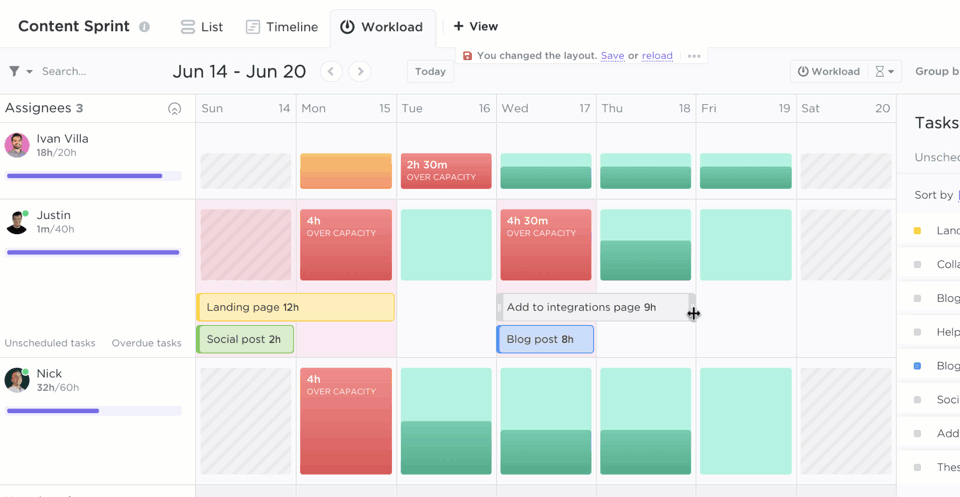
This phase of the design process brings your creations to life in a real-world context. Up until now, everything you’ve worked on is theoretical. You’ve done sketches, created mockups, and generated ideas.
Now it’s time to build your vision of the finished product. 🛠️
Depending on resources, funding, and your industry, this stage may involve scoping out the final product or creating a scaled-down prototype. In health care and manufacturing, you’ll probably create a model version of your final product.
In sales and marketing, you may create the first draft of a branding tool or campaign.
Implement
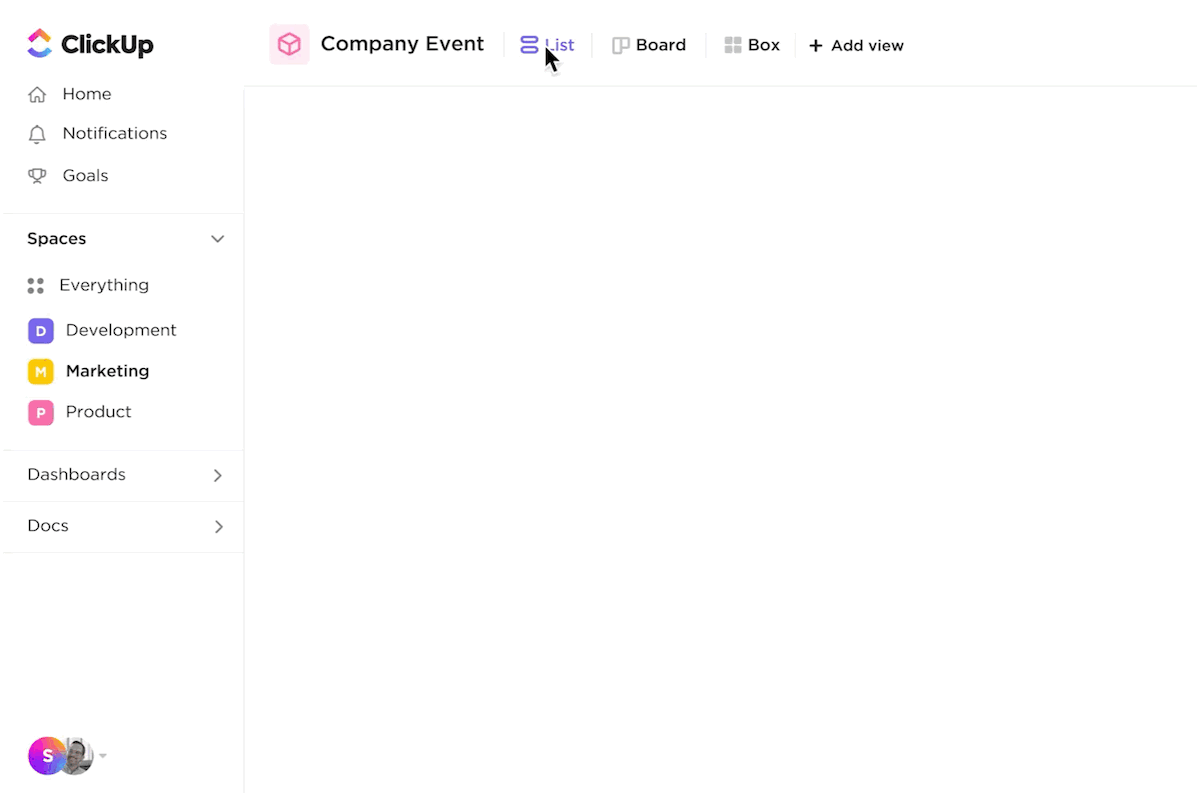
Of the stages of the design thinking process, this one can be the most intimidating. That’s because it’s testing time. Now is when you find out what functions well in your design work and what needs to be fixed.
In the testing phase, you’ll look for flaws in the design, gather user feedback, and get input from other stakeholders. Some companies may want to break out the testing part into separate stages.
This is especially true if you’re developing complex solutions that need multiple versions before launch. 💻
Assess
The final step of the design thinking framework is to measure your results and reflect. This step is about measuring results from your proposed solution and reviewing how well the process itself worked. 🧪
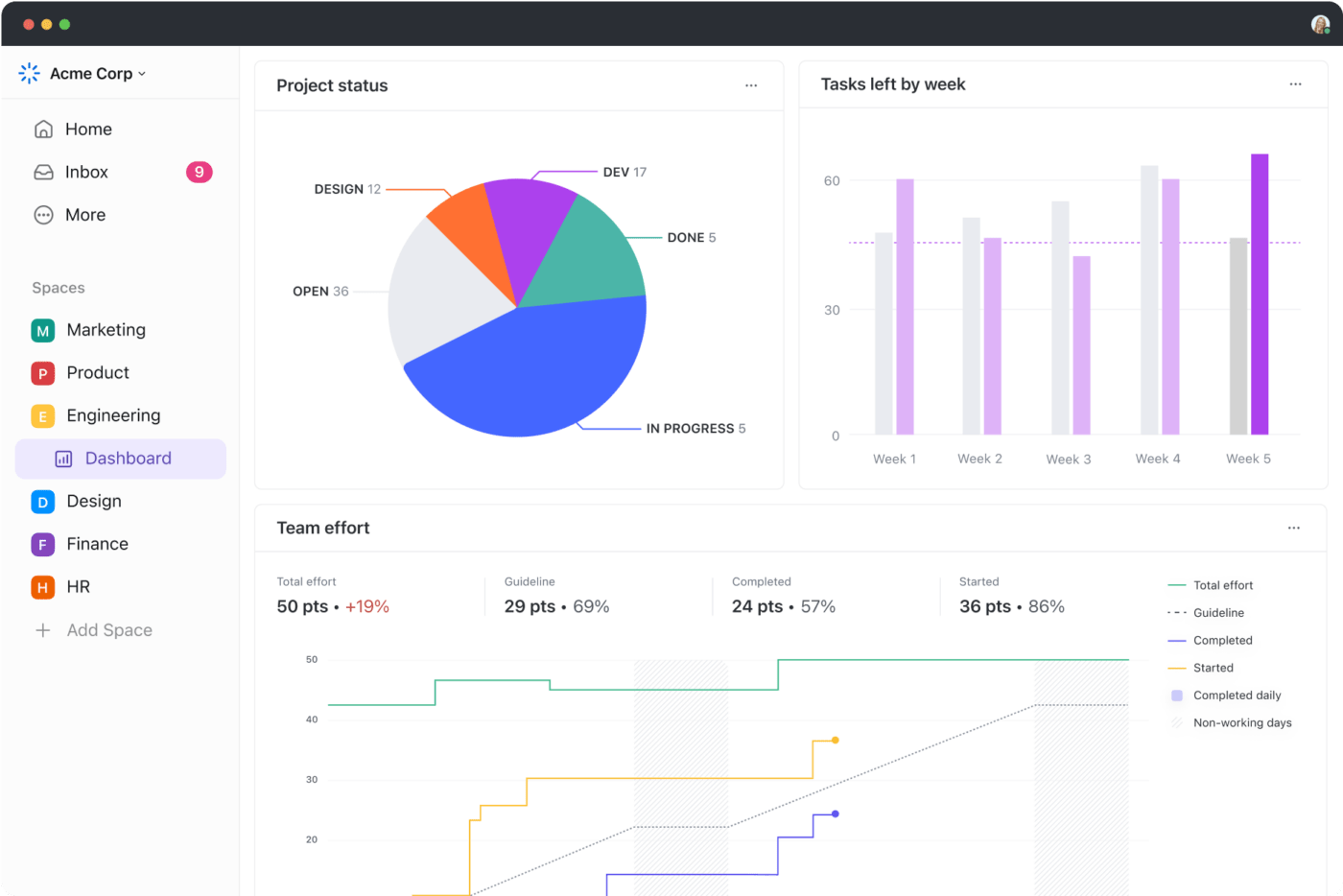
Here, you’ll review design decisions to see how well you evaluated the end user’s needs and how effective your final design was. Look at metrics and user feedback to see how they feel about the finished product.
Record these insights for future design thinking workshops.
Schedule a meeting with the team to go over how they feel the design process went. Highlight things that worked well in the process and discuss areas for improvement. T
hese can include things like shorter or longer timelines, broken-out stages for more detailed work, and more frequent check-ins throughout.
Streamline the Design Process With ClickUp

The design process is an iterative method that can help you empathize with customers and come up with better products. From ideation sessions to testing and launch, ClickUp can make your design process easier.
ClickUp’s Design team feature lets you manage the entire design process in one convenient space. Use templates to create problem statements and project plans or hop into Whiteboard view to brainstorm solutions during the ideation phase.
Create timelines, visualize team capacity, and automatically assign tasks to the relevant team members.
Sign up for ClickUp today to get started managing a better design process. With customizable notifications, you’ll always know what stage the project is in and who’s working on what.
Thanks to hundreds of features, you can personalize workflows so they work for your team and industry. 🤩



